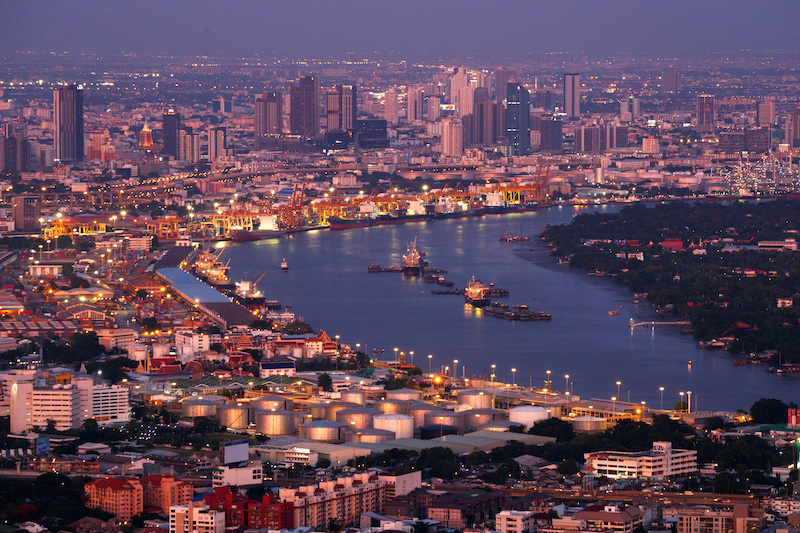A surge in prices for liquefied natural gas (LNG) has forced Thailand to extend the lifespan of some coal plants for longer to meet its power needs, a senior official said on Wednesday.
The country has intensified its search for alternative energy sources, ranging from coal to renewables, to cut LNG imports amid a surge in prices of the super-chilled fuel, Prasit Siritiprussamee said.
Prasit, who is assistant secretary general of Thailand’s Energy Regulatory Commission (ERC), spoke on the sidelines of the Singapore International Energy Week forum.
“The price of LNG is increasing rapidly and we are trying to cope with this by finding (other) options,” he said.
Global gas prices rose to records this year as a result of Russia’s gas supply cuts to Europe amid the war in Ukraine.
Europe has imported record volumes of LNG which has eased some of their supply concerns – but that has put Asian buyers under enormous strain, as regional spot prices surged to a record while shipments were pulled to Europe, where prices were even higher.
The price volatility coincided with a rebound in Thailand’s electricity demand which hit a new peak in April as industries ramped up after the Covid pandemic, hitting consumers hard.
ALSO SEE:
Global Energy Crisis Driving Faster Shift to Renewables: IEA’s Birol
Slow Transition
Compared to Europe, Thailand’s transition to clean energy sources has been lethargic. The Land of Smiles, as it’s known, is a net oil and gas importer and Southeast Asia’s No-2 economy.
Last year it relied on imports for nearly 75% of its electricity, crude oil, coal and natural gas needs. Natural gas generates 55% of Thailand’s electricity and of the gas consumed, about 30% is LNG, Prasit said.
Among the measures to reduce its gas usage, Thailand is extending the lifespan of some of its coal-fired power plants for one or two years, shelving earlier plans to retire the units, Prasit said. The government is also purchasing excess electricity for the grid from local renewable power plants, he added.
Thailand, which already imports hydropower from neighbouring Laos, could seek more supplies, he added.
The country’s ERC Secretary-General Komkrit Tantravanich said in March that some of Thailand’s power plants will switch to using oil to generate electricity to lower gas demand, while the government was extending the closure of a coal power plant and biomass contracts.
Energy security and keeping electricity prices at affordable levels are Thailand’s priorities, Prasit said.
“We try to optimise prices to be as low as possible. Even if we have to use fuel oil or diesel oil, if it’s cheaper than the LNG, then we must do it,” he said.
To reduce spot LNG purchases, Thailand has been looking to secure supplies in medium- to long-term contracts, but that they were “quite difficult” to find and negotiate, Prasit said.
“At this moment, people can’t forecast what will happen and how long the high-price situation (will last),” he added. “The priority is to find alternative options and reduce the use of gas.”
Exports up 7.8%
Meanwhile, Thai exports rose more than expected in September, helped by increased global activity, an improved supply of components and a weak baht currency, but exports to China continued to fall, the commerce ministry said on Wednesday.
Exports, a key driver of Thai growth, rose 7.8% in September from a year earlier, compared with a forecast rise of 4.2% year-on-year in a Reuters poll, and against August’s 7.5% increase.
In the first nine months of 2022, exports rose 10.6% from the same period a year ago, the ministry said in a statement.
Full-year export growth should reach 8% this year, double the ministry’s target, Commerce Minister Jurin Laksanawisit told a news conference.
“Export growth should still be good in October-December, remaining a key driver of the economy,” he said.
The baht, which is hovering around a 16-year low against the dollar, should help rice exports exceed the ministry’s target of 7 million tonnes this year, he added.
In September, exports of farm and agro-industrial products rose 1.8% year on year, while key industrial goods increased 9.4%, the ministry said.
Among key markets, shipments to the United States jumped 26.2% from a year earlier and those to Southeast Asia rose 16.1% Shipments to China slipped 13.2% year on year.
Imports rose 15.6% in September from a year earlier, less than a forecast 20.0% jump. Thailand posted a trade deficit of $853 million in September, versus a forecast deficit of $2.9 billion.
- Reuters with additional editing by Jim Pollard
Read more:
Thailand to Grow 3.5% as a Weak Baht Boosts Exports
Thailand’s Top Court Allows Prayut to Return as PM, Briefly
Thailand Plans $22bn in New Borrowing in 2023 Fiscal Year
























